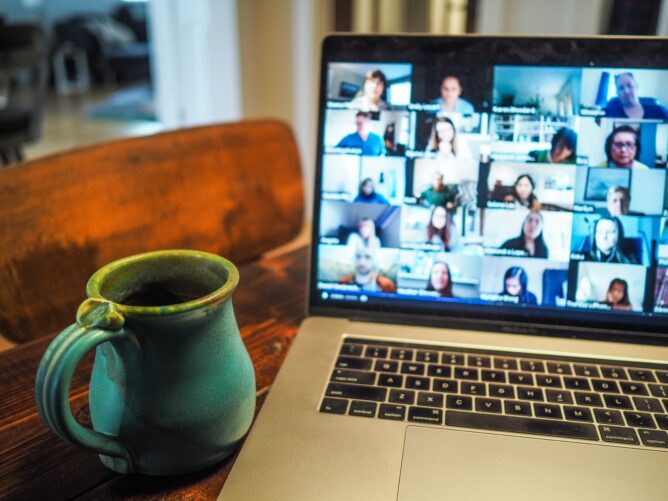A community of inquiry, as described by Garrison, Anderson, and Archer, is a community of teachers and learners that relies on the interaction of three core elements: cognitive presence, social presence, and teaching presence. As is emphasized in their article, and the many others that followed it, a successful online course depends on the development of this community of inquiry that successfully integrate all three elements. My own experience, as a learner and as a teacher can attest to this. However, it’s not an easy goal to accomplish and a lot of effort and thought is necessary to be successful.
As I plan my course for the fall, I am intrigued by how I can successfully develop a course that meets all the requirements. According to Garrison, Anderson and Archer, while cognitive presence, “the extent to which the participants in any particular configuration of a community of inquiry are able to construct meaning through sustained communication” is the most basic element, it is heavily dependent on the other two. Social presence, “the ability of participants in the Community of Inquiry to project their personal characteristics into the community, thereby presenting themselves to the other participants as ‘real people.'” Finally, teaching presence, is defined as the function of the teacher to design the educational experience and the shared function of the teacher and the learners to facilitate the course. So how can these elements be combined in a successful course?
The cognitive presence in the course will be constructed through the materials available in the course. The goal is to identify the essential learning that students should accomplish in the course. This, as my colleague Lauren Tucker explains, refers to identifying those things that we want students to be able to do when they leave the course. This will help define the learning activities in the course as well as how the students will demonstrate their learning. A careful consideration will help construct the learning activities in a way that stimulate critical thinking and a meaningful application of the concepts learned.
The cognitive presence will be supported by the social and teaching presence. By using another concept that Lauren Tucker describes well in her training video, Universal Design for Learning (UDL), I can establish my teaching presence and encourage meaningful cognitive and social presence. By using multiple means of engagement, I can engage students in a variety of types of work, from group assignments to individual work, discussions and short lectures on the various concepts of the course. By employing multiple means of representation, I can provide students with a variety of resources to engage them with the class. I can provide text materials in the form of articles to read, I can provide presentations that use screen capture to show them different tools, and I can use YouTube videos that present the perspective and experience of others. By employing multiple ways of expression I can incorporate writing, video and text into the course. For example, faculty and student introductions, so essential to establishing social presence in an online course, can be done via written text, audio, or through the integration of a more whimsical technology platform, such as Flipgrid. All this is reliant on that teaching presence that requires the work in setting up the course, the involvement in facilitating student conversations and in allowing students to engage in conversations within the course that they themselves facilitate.
Creating a community of inquiry and conducting a successful course is not easy. I’ve both failed myself and have participated in courses where the community was not well established. I have participated in online courses where the instructor asked students to read the book and answer the questions at the end of the chapter. If we didn’t hear from him, everything was good. Clearly the teaching presence was not established in a course like this and it led to a lack of social presence and a minimal cognitive presence. However, these failures are not always easy to catch and understand. I’ve also conducted courses where the group discussions did not go as well as I anticipated or wanted. Group discussions in an online course are hard to construct and manage. They require a deep and thoughtful approach that combines both cognitive and teaching presence. Students can easily get lost in the demands of the topic or their responses to their peer comments can end up being minimal and consist of “I agree with…”
I’ve also taken online courses that were rewarding, where the instructor clearly established all three elements and the level of engagement from all students was great. That showed me that while on the ground courses are sometimes more comfortable to create and conduct, well designed and run online courses can work just as well if not even better. As the research shows, students in an online course can have the ability to interact with each other in an asynchronous environment that allows time for reflection and encourages critical thinking leading to richer discussions and participation from students who might not participate in a fast moving on-the ground discussion.
As Laura Gogia talks about in her blog, a Community of Inquiry has the potential of extending learning into the creation of Personal Learning Networks (PLNs) and e-portfolios. The two tools, if employed correctly can lead to life long learning, the stimulation of ideas, and the creation of knowledge that is not necessarily possible when conducting scholarship within the closed walls of a classroom or office.
